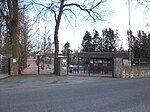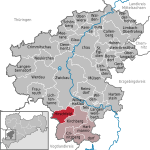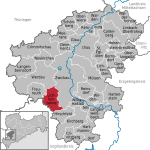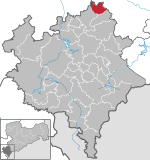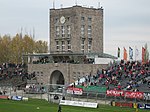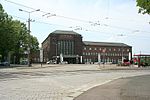Pleiße
Rivers of GermanyRivers of SaxonyRivers of ThuringiaSaxony river stubsThuringia river stubs ... and 1 more
Tributaries of the White Elster

The Pleiße is a river of Saxony and Thuringia, Germany. The Pleiße has its source southwest of Zwickau at Ebersbrunn, then flows through Werdau, Crimmitschau, Altenburg, and other towns and villages in Saxony and Thuringia, before flowing from the right into the White Elster in Leipzig. The river originally had a natural length of 115 km (71 mi); however, south of Leipzig, it has been straightened, which shortened it to around 90 km (56 mi).
Excerpt from the Wikipedia article Pleiße (License: CC BY-SA 3.0, Authors, Images).Pleiße
Reichenbacher Straße,
Geographical coordinates (GPS) Address External links Nearby Places Show on map
Geographical coordinates (GPS)
| Latitude | Longitude |
|---|---|
| N 50.6475 ° | E 12.425277777778 ° |
Address
Pleißenquelle
Reichenbacher Straße
08115 (Ebersbrunn)
Saxony, Germany
Open on Google Maps
